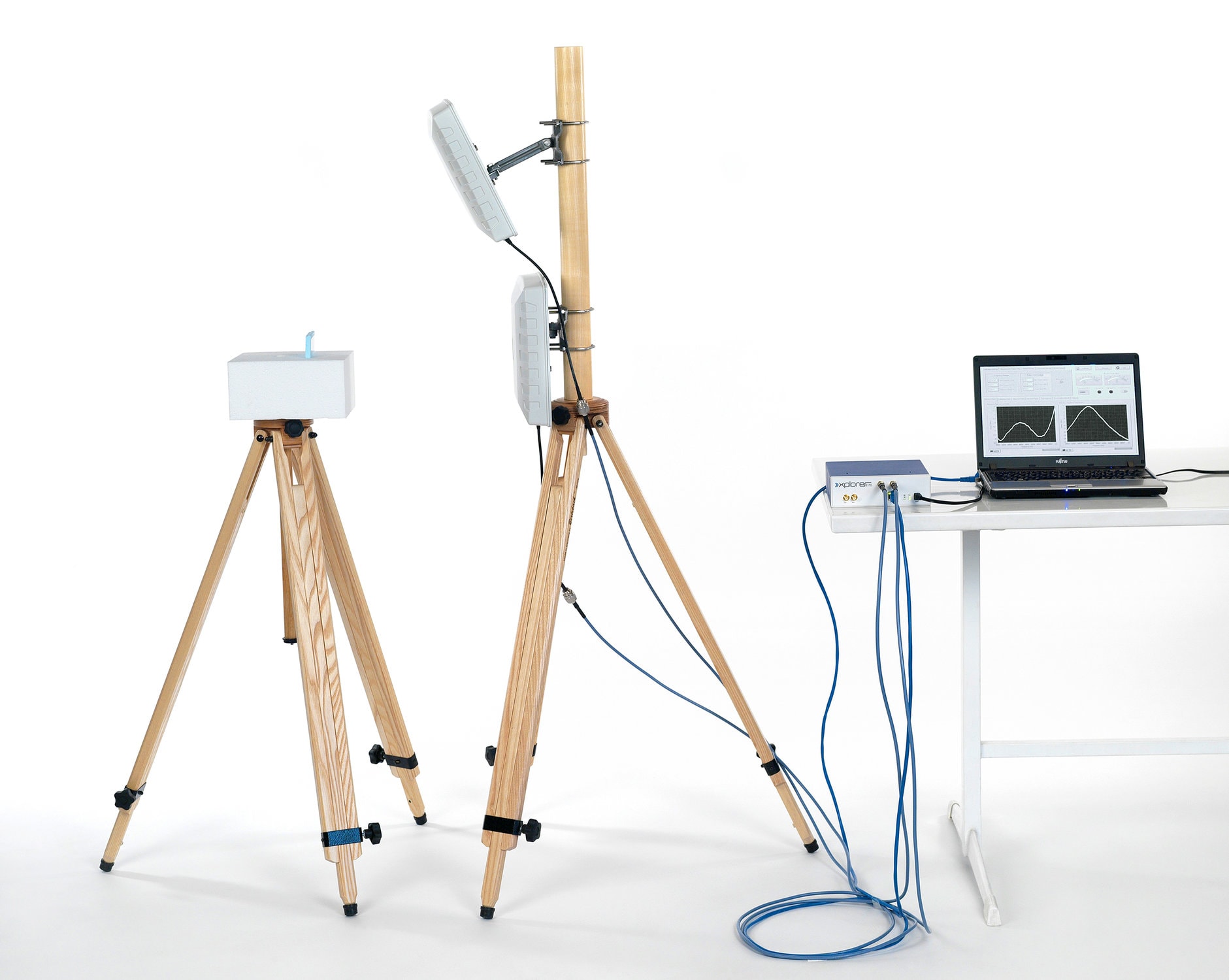
TOP 5 RFID READER ISSUES
AND HOW TO AVOID THEM
At CISC, we know designing and implementing an RFID reader also comes with its share of challenges. Here are the most common pain points we have discovered in more than 20 years supporting our customers with RFID design services and test solutions and being an active member in the most common international standardization groups.
1. Reader Sensitivity
RFID tag range limit issues are a thing of the past. State-of-the-art tags of today need little energy and are powered over much more than 20 meters. To achieve these ranges overall, a reader needs to be able to receive even weak signals from tags further away. The industry has seen this improvement in tag sensitivity and therefore RAIN RFID applications have become return link limited. This means the reader fails to hear the tag answer due to low backscatter range and is one of the primary reasons for failed deployments. Hence, the reader sensitivity is mission-critical in many successful RFID projects. To overcome this challenge and improve the accuracy and read rates of readers, the new generations of readers need to be highly sensitive and also able to cope with the variation of tag parameters such as Backscatter Link Frequency (BLF) tolerance, as well as system parameters like phase shift.
2. Lack of Reader Conformance
RAIN RFID readers are required to conform to the ISO and GS1 standards, as well as to radio regulations and others. Pretesting the readers to the existing standards is not only difficult but also a long and time-consuming process. In reality, only parts of tests are done with reasonable effort. Engineering teams struggle with time pressure, lack of automation, or simply the knowledge about standards required for conformance testing. This easily results in a lack of test coverage of readers. To make all readers in the market more comparable based on the values defined by the Gen2 Protocol while increasing the performance of RFID deployments, measurements on link timing, physical layer, and RF envelope parameters are essential.
3. Reader Gap
The term Reader Gap was first introduced in 2017 when a new generation of RAIN RFID tag chips exceeded the 20-meter read range. While this caused great enthusiasm among the system designers, there was soon a drawback as the achieved overall range was often far below. The Reader Gap is determining the loss of operational range of a RAIN RFID system due to low reader receiver performance. The operating range is the actual range or distance that can be reached in an application. The minimum distance of the forward link from the reader to the tag is determined by the maximum transmit power, typically limited by radio regulations, and the minimum operating power Pmin of the tag. And the return link from the reader to the tag is determined by the tag backscatter power Pback and the reader receiver sensitivity. To bridge the gap between the tag and reader, the reader receiver sensitivity is an important parameter and depends on values like signal phase, frequency (BLF), and antenna gain. An often occurring variation of 6 dB means a loss of half of the range.

Figure 1 shows operating ranges when using high-end portal readers (sensitivity of -85 dBm), regular fixed readers (sensitivity of -75 dBm), and budget readers as often with handhelds (sensitivity of only -65 dBm). The values go from 25 m, 12 m down to below 6 m for free space and are considerably lower for tough environments. This gap in operation range is caused by the reader and is therefore also called the reader gap.
4. Lost Protocol Speed
The understanding and proper use of the RAIN RFID Air Interface Protocol, which means ISO/IEC 18000-63 and GS1 UHF EPC Gen2, with all its commands and parameters are essential to reach reader high-speed and a successful RFID application. Read this interesting whitepaper from RFID Alliance on air interface and protocol considerations when deploying a RAIN RFID System. According to RAIN Alliance, the number of tags in the market reached 28 billion in 2021 and those tags need advanced air interface handling to effectively read the tags required for an application. For example, reading a RAIN luggage tag takes around 5 ms, however, if the suitcase contains five pairs of shoes with embedded RAIN tags, a dozen of new apparel items, a conference batch, and a few more things, then a suitcase moves 1 meter instead of 5 cm on a conveyor belt until it is identified. For that reason, the understanding of the air interface communication, as well as choosing the right protocol parameters and software routines utilizing the protocol is a key differentiator to achieve a successful application. Sniffer tools make it visible whether filter commands (e.g. Select and Query) on data content (e.g. the IATA baggage AFI 0xC1) are correctly applied and utilized in the air interface.
5. Read Rate
There are often strong expectations on the read rates. The achievable results depend on choosing the correct tag and reader, tag placement, reader antenna, environment parameters, but also on the application priorities. Is the priority on identifying all tags, or is it okay to miss a few tags when being significantly faster? For that, it is important to understand how the collision arbitration is behaving and whether tags are missed due to weak signals. Keep an eye on the reader transmit power for a minimum of required RF energy while ensuring less interference using multiple readers. Testing is another gamechanger to achieve high read rates. The CISC RFID Xplorer with its Sniffer and the analysis feature will help you to analyze the tag-to-reader communication in more depth for debugging and to understand which of the tags in the environment failed to answer.
If you would like to get further insights and inputs on the most common reader issues, reach out to us.

